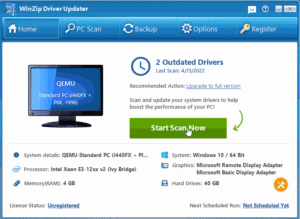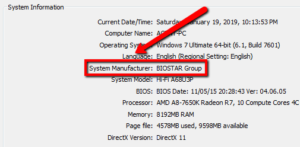Fix USB Driver Issues:
Have you tried accessing your USB’s data files, and you see the error shown below?
“USB Device not recognized: One of the devices attached to this computer has malfunctioned and windows does not recognize it.”
This error usually occurs when your current USB driver is corrupted or unstable. To fix this, please follow the steps given below.
Step 1: Uninstall
1. Please click Start button, type Device Manager in the Search box
2. Select Device Manager from the top result
3. Choose Disk Drives from the list of hardware
4. Right-click the USB external hard drive with the issue, and select Uninstall.
5. After the hard drive is uninstalled, unplug the USB device
6. Wait for a minute and then plug the USB device again
7. Check for the USB drive in Windows Explorer
Step 2: Navigate your Power Management Settings
Windows by default try to saves up power, it then switches your USB controllers off when they’re not in use, and switches back on again when they’re needed. Unfortunately, this procedure won’t work at times, and Windows fails to switch your USB controllers on again.
To resolve this issue, you may stop Windows from managing this specific task.
1. Please open Device Manager
2. Expand the Universal Serial Bus controllers
3. Double-click the first USB Root Hub device in the list, and click the Power Management tab (If you see only one USB Root Hub device, please proceed.)
4. Unchecked the Allow the computer to turn off this device to save power checkbox, and click OK
5. Repeat steps 3-4 for each USB Root Hub device in your list of Universal Serial Bus controllers
Step 3: Install the latest Windows Updates
1. Please select the Start button, type Windows Update in the Search box
2. Select Windows Update on the top result
3. Select Check for Updates option
4. Select the check box next to the updates, then select Install updates
5. If prompted, review the license agreement, then select Accept
6. Follow the onscreen instructions to download and install the updates
7. You may be asked to reboot your computer, please do so to resolve the issue
Step 4: Check your USB Device and Repair
Kindly check your USB device, it might be because of hardware issues. To fix your device, please follow steps below.
1. Please connect your USB device to your PC
2. Go to My Computer(ThisPC)
3. Right-click the USB drive and open its Properties.
4. Select the Tools tab
5. Under Tools, you will be able to see Error Checking, click the Check button
Step 5: Get the latest chipset drivers for your Motherboard
1. Please go to your start and type dxdiag, select the top result
2. Once selected, you will be able to see Diagnostic Tool
3. Review the result and you will be able to see your System Manufacturer
4. Visit your system manufacturer’s support website
5. Navigate their website to find the correct drivers for your motherboard
Step 6: Hold Power Button
This one of the easiest ways that may resolve the issue.
1. Please hold down the power button for 30 seconds or so (This will discharge the capacitor)
2. Once done, reboot your computer
3. Check to see if the issue is resolved
Step 7: Update System Drivers
If you don’t want to get on the complex steps given above, you can try out our Driver Updater Program. It will update your outdated drivers, thus, this may resolve the issue you are experiencing.

WinZip Driver Updater will deliver the latest driver update straight from the official manufacturers.
I hope this helps!
Thanks,
Chris




